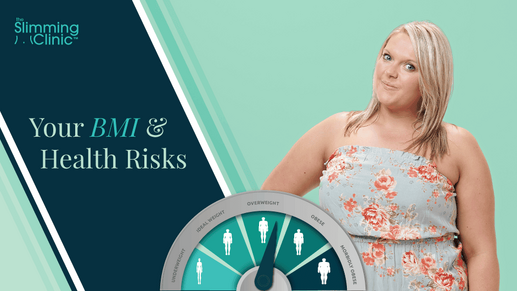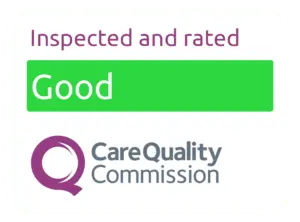Beyond the Scale: The Health Benefits of Losing 10% Of Your Body Weight
Beyond the Scale: The Health Benefits of Losing 10% Of Your Bodyweight
Are you worried about the increasing rates of diabetes?
You’re not alone.
In recent years, we’ve witnessed a drastic spike in this awful disease, due to more and more people struggling to manage their weight. As a result, they’re massively increasing their chances of developing Type 2 diabetes.
But there’s always good news!
There are practical steps you can take to break the harmful cycle between obesity and this life-changing condition.
In this blog post, our experts explain the relationship between obesity and Type 2diabetes, how losing just 10% of weight could help reduce your risk of developing the disease, and how doctor-led weight loss programmes can benefit your journey to better health.
How common is diabetes?
Over 4 million people have been diagnosed with diabetes in the UK, with Type 2 being the most common type of diabetes.
Obesity is one of the main causes of Type 2 diabetes and preventable death worldwide, so it’s clear that we need to take action to address these interlinked public health crises.
How can we prevent diabetes?
One of the best ways to reverse or delay diabetes is to lose weight.
A study by Johns Hopkins scientists revealed that people with pre-diabetes who managed to shed just 10% of their body weight within six months of diagnosis slashed their risk of developing Type 2 diabetes by a whopping margin over the next three years!
This underlines the importance of taking action.
Don’t let your weight turn into a serious health crisis. Make yourself aware of the risks, keep calm, and act with purpose. If you know anyone in a pre-diabetic stage, pass on this information and make them aware that they can reverse the disease with achievable and sustainable weight loss.
Recently, our CEO David Standing went live on Facebook with our amazing clinical lead, Dr Jane .
They had an in-depth discussion about the clinical link between obesity and diabetes and what you can do to prevent and reverse the disease.
We have added the video to this article, and we encourage you to watch and inform yourself further. If you know anyone else who would benefit from this video, please share it on.
How can I tell if I have type 2 diabetes?
If you’re worried you could have type 2 diabetes, or are on your way to developing the disease, there are several warning signs you can be on the lookout for, including:
- Excessive thirst
- More frequent urination, particularly at night
- Feeling more tired than usual
- Cuts and wounds taking longer to heal
- Blurred eyesight
The sooner you receive a diagnosis and seek treatment, the better your chances are of reversing your condition, and at The Slimming Clinic, we have HbA1c tests available for you to order online.
Our simple fingerpick diabetes test will give you your results in the form of a comprehensive written report, to talk through with one of our doctors or receive in your email inbox within 5 working days.
We strongly encourage you to go over your results with one of our doctors, as not only will they be able to explain what your diagnosis means but advise you with regards to the diet and lifestyle changes you should make, too.
What’s the relationship between obesity and Type 2 diabetes?
As we’ve already established, being overweight or obese greatly increases the risk of developing diabetes – Type 2 in particular.
According to a report published by Public Health England, obese adults are five times more likely to be diagnosed with Type 2 diabetes than adults of a healthy weight.
But why?
Many overweight or obese people carry excess fat in their abdominal area. Studies suggest that this abdominal fat causes fat cells to release pro-inflammatory chemicals, which make the body less sensitive to the insulin it produces and affect the way insulin cells respond to it.
This is called insulin resistance – the trademark of Type 2 diabetes.
Thus, having a larger waistline puts you at an increased risk of developing Type 2 diabetes.
Obesity is also believed to trigger changes to the body’s metabolism, which causes fat tissue to release fat molecules into the blood and affect your insulin-responsive cells – leading, again, to insulin resistance.
What’s the best way to lose weight?
We’ve mentioned how losing just 10% of your body weight can reduce your chances of developing Type 2 diabetes, so what does it take to achieve this goal?
The answer is simple… commitment and support!
By working closely with The Slimming Clinic, you’ll have access to the best practices and techniques for managing your weight and blood sugar levels.
We provide doctor-led, personalised programmes, medical supervision, and accountability to help you stay on track. Behaviour modification techniques can also be used to manage emotional eating, stress, and other factors that contribute to weight gain.

Mounjaro Effectiveness: Long-Term Weight Loss Sustained Over 3 Years

Your BMI and the Health Risks

Wegovy vs Ozempic: Which Is the Better Weight Loss Medication?

How Sleep Affects Weight Loss – World Sleep Day 2025

Mounjaro vs Wegovy: Which Weight Loss Injection is Right for You?




